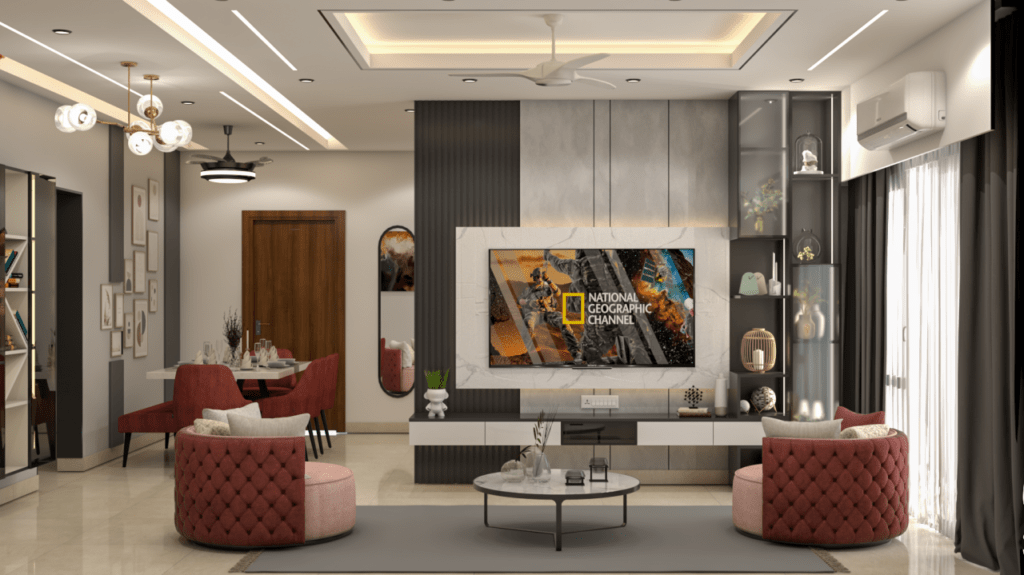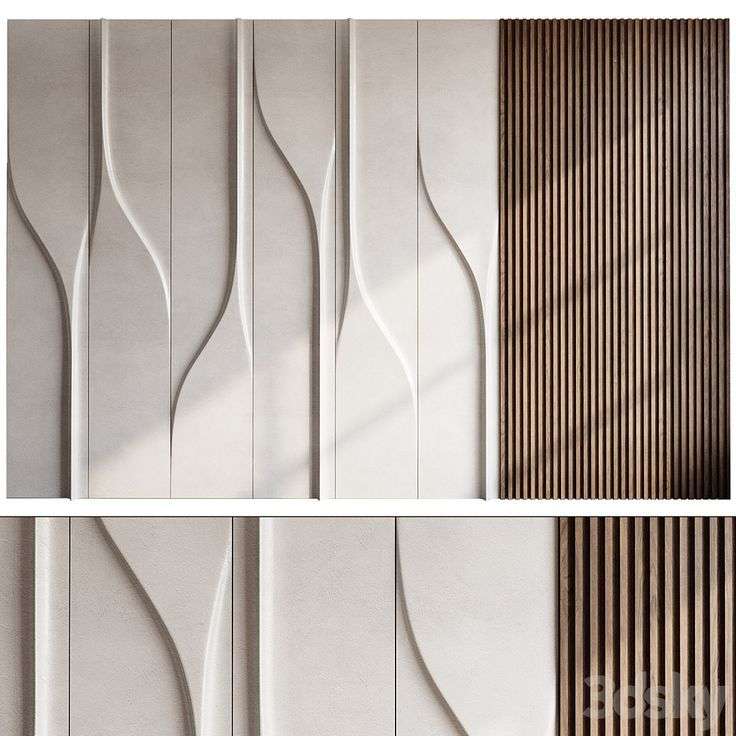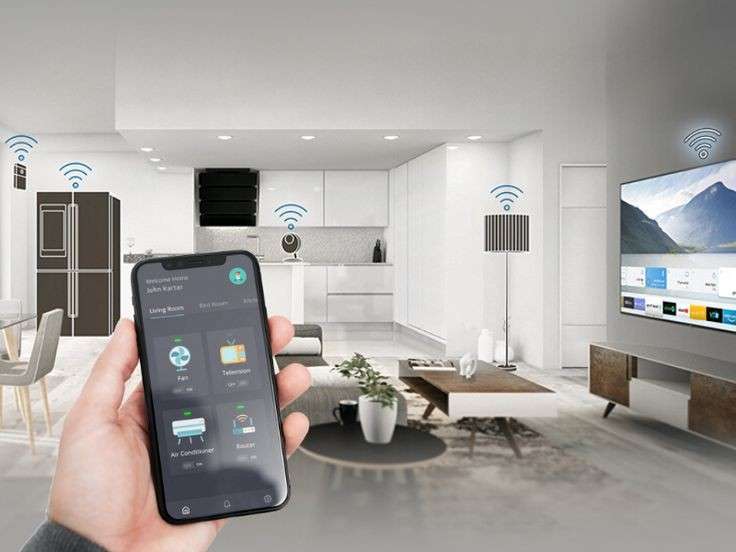In today’s fast-paced world, smart homes are no longer just a futuristic concept—they’re a reality. With advances in technology and interior design, homeowners now have the ability to integrate cutting-edge devices and systems into their living spaces, improving both convenience and functionality.
At Scale & Structure, we believe that smart home integration can enhance your home’s aesthetic and overall living experience. Whether you’re looking to install smart lighting, climate control, or home security systems, merging technology with interior design creates spaces that are not only stylish but also highly functional. In this blog, we’ll explore the benefits of smart home integration and how it can be seamlessly incorporated into your interior design.

What is Smart Home Integration?
Smart home integration involves the use of smart devices and technologies to automate and control various functions within your home. These devices can be controlled remotely via smartphones, tablets, or voice assistants, offering a more streamlined, efficient, and personalized living experience. From adjusting the thermostat to controlling your lights and security systems, smart homes allow you to manage your home environment with ease.
But smart home integration is more than just about technology—it’s about how technology is incorporated into your living spaces in a way that enhances the overall design and feel of your home. When done correctly, it can complement the existing aesthetics of your space while offering enhanced convenience.
The Benefits of Smart Home Integration
1. Increased Convenience
One of the most significant advantages of a smart home is the convenience it offers. You can control many aspects of your home—such as lighting, temperature, and security—at the touch of a button or a voice command. This level of control makes everyday life more manageable, whether you’re at home or on the go.
- Voice assistants like Amazon Alexa or Google Assistant can integrate with various devices, allowing you to adjust settings with simple voice commands.
- Smart thermostats can adjust the temperature in your home based on your schedule, ensuring your space is always comfortable without wasting energy.
2. Improved Energy Efficiency
Smart home technology plays a key role in promoting energy efficiency. By integrating smart lighting, thermostats, and other devices, you can reduce energy consumption and lower your utility bills.
- Smart thermostats like the Nest or Ecobee can learn your schedule and automatically adjust the temperature to save energy when you’re not home.
- Smart lighting systems allow you to dim or turn off lights remotely, ensuring that energy isn’t wasted.
- Smart plugs and appliances can be set to operate only when needed, cutting down on unnecessary energy usage.
3. Enhanced Security and Safety
Smart home integration can significantly improve the safety and security of your home. With the ability to monitor your space remotely, you can ensure that your home is always secure, whether you’re home or away.
- Smart security cameras and doorbells allow you to monitor the exterior of your home and communicate with visitors, enhancing both convenience and security.
- Smart locks provide keyless entry and remote access, ensuring that only authorized individuals can enter your home.
- Smart smoke detectors and carbon monoxide alarms can notify you of potential dangers, keeping your family safe.
4. Personalized Experience
Smart homes can be tailored to meet your unique needs and preferences. With automation systems, you can set your home to adapt to your routine. For example, your lighting and climate can adjust automatically to create the perfect atmosphere as you come and go.
- Scene-setting features allow you to create the perfect ambiance for any occasion, whether you’re watching a movie, reading, or hosting a dinner party.
- Automated routines can help you save time and energy. For instance, lights can turn on when you enter a room, or your favorite music can start playing when you get home.
5. Aesthetically Pleasing Technology
When integrated thoughtfully, smart devices don’t have to disrupt the aesthetic of your home. In fact, many modern smart devices are designed with sleek, minimalist looks that complement contemporary interior designs. For example:
- Smart speakers can blend seamlessly into your decor with designs that match your style, whether it’s a high-end speaker or a hidden, discreet unit.
- Smart lighting can be integrated into your home without the bulk of traditional light switches, creating a clean, streamlined look.
- Hidden wiring and in-wall speakers can be installed to keep technology out of sight, ensuring a clutter-free environment.
How to Integrate Smart Technology into Interior Design
Integrating smart home technology into your interior design doesn’t mean compromising on style. Here are some tips to merge both seamlessly:
1. Smart Lighting Solutions
Lighting is one of the easiest ways to incorporate smart home technology. Smart lighting systems allow you to control the brightness and color of your lights remotely, and many can be synced with your schedule or lifestyle.
- Recessed lighting or smart bulbs can be used to highlight architectural features or artwork while offering flexible lighting control.
- Dimmable smart lights allow you to create ambiance in the evening, from bright, energizing lights to soft, relaxing tones for nighttime.
2. Built-In Technology
For a more seamless and clutter-free look, consider integrating smart devices directly into your home’s design. Built-in speakers, hidden TV mounts, or in-wall charging stations can provide high-tech functionality without compromising aesthetics.
- Integrated home automation systems can be controlled from a single, discreet panel or smartphone app, allowing you to manage lighting, sound, temperature, and more without excess clutter.
- Smart home hubs can be installed discreetly into a wall or a dedicated space, making it easy to control your entire home without visible devices.
3. Focal Points
Certain smart devices can be designed to be a focal point of a room while also serving a functional purpose. For instance, a smart thermostat like the Nest Thermostat has a sleek, modern design that can serve as a statement piece while controlling your home’s temperature.
- Smart TVs or projectors can be incorporated into custom cabinetry or wall units, offering cutting-edge technology while keeping the design cohesive.
- Smart mirrors that display time, weather, or news can double as both functional and decorative elements in bathrooms or entryways.
4. Integration with Furniture
To ensure that technology blends into your home’s design, furniture can be customized to accommodate smart devices.
- Smart desks with built-in charging stations and wireless connectivity keep your workspace organized and tech-friendly.
- Smart sofas with built-in USB chargers or wireless speakers ensure that comfort doesn’t have to be compromised by technology.
Smart Home Integration with Scale & Structure
At Scale & Structure, we specialize in designing homes that blend cutting-edge technology with beautiful, functional interiors. Our team can help you seamlessly integrate smart home solutions that elevate your home’s convenience, efficiency, and aesthetic appeal.
Why Choose Scale & Structure?
- Expert Design Integration: We offer expert consultation on integrating smart technology into your home’s design without compromising style.
- Personalized Solutions: Our team will work with you to tailor smart home systems that suit your lifestyle and needs, ensuring a personalized experience.
- Sustainable & Efficient: We focus on energy-efficient solutions that help reduce your carbon footprint while enhancing the functionality of your space.
Ready to transform your home into a smart, stylish sanctuary? Contact Scale & Structure today for a consultation and discover how smart home technology can enhance your living experience.



